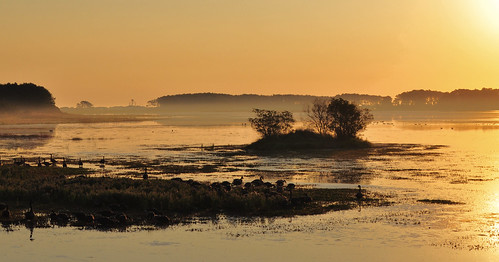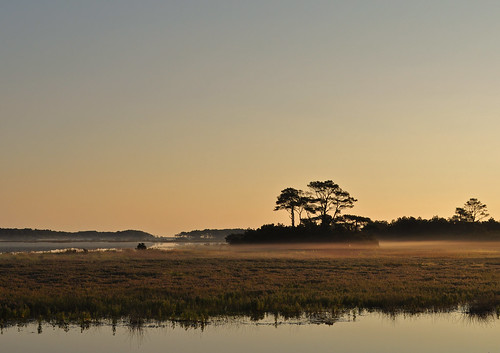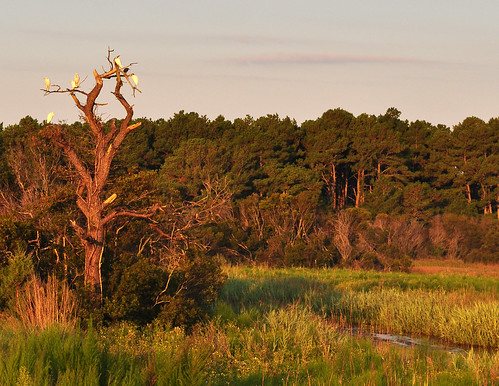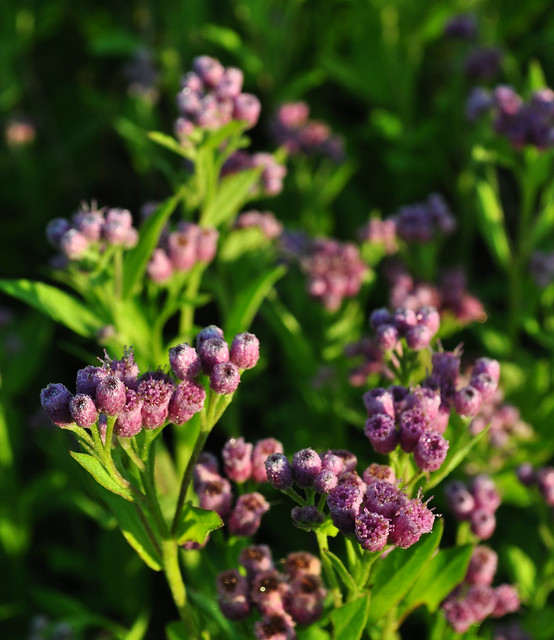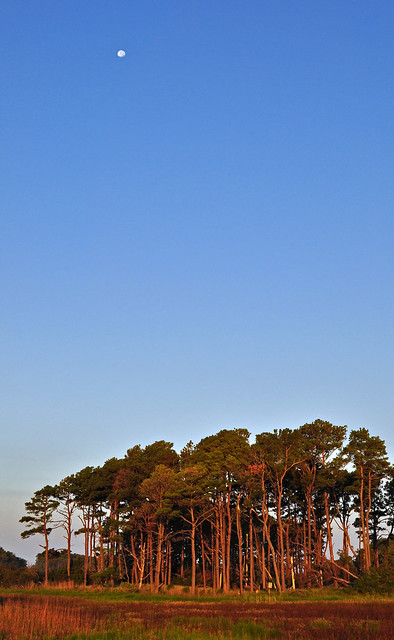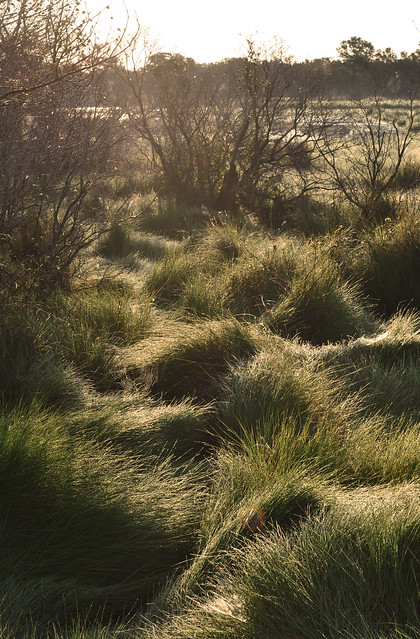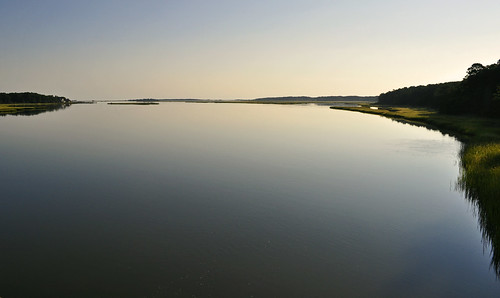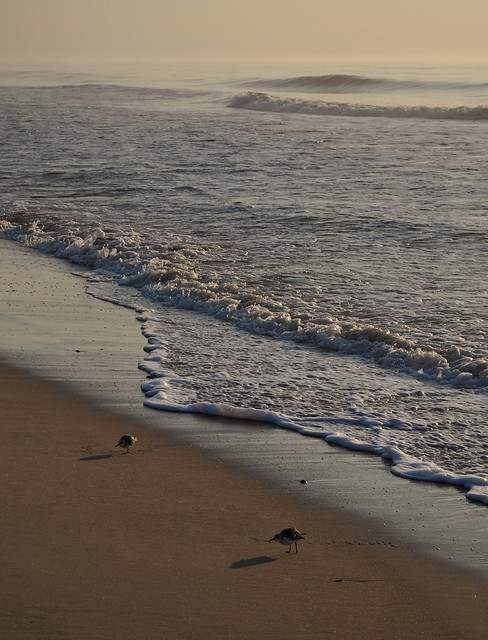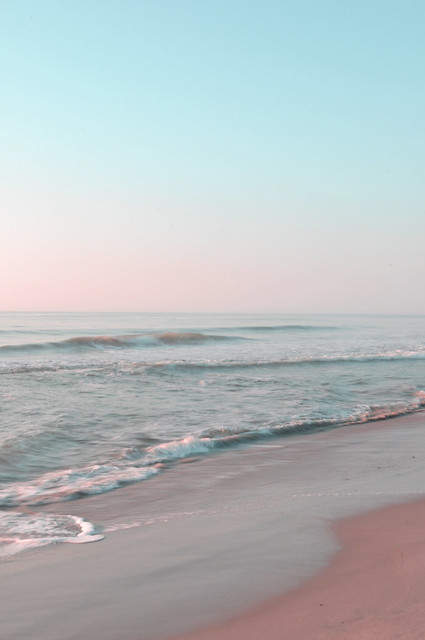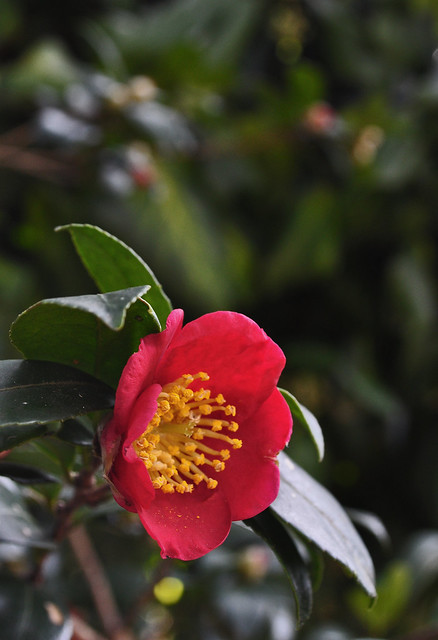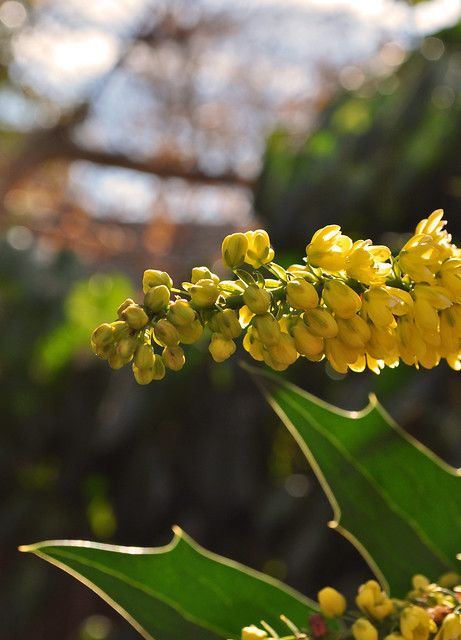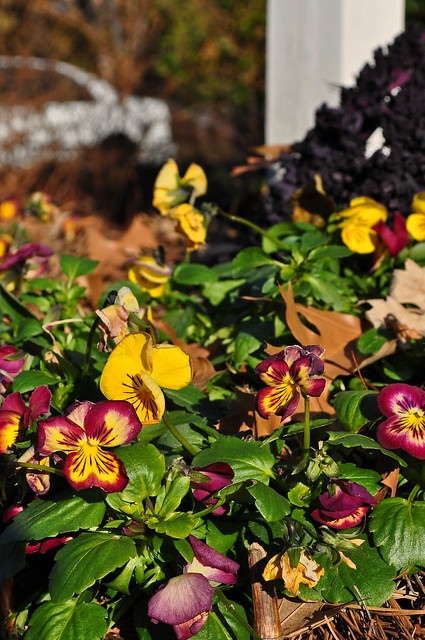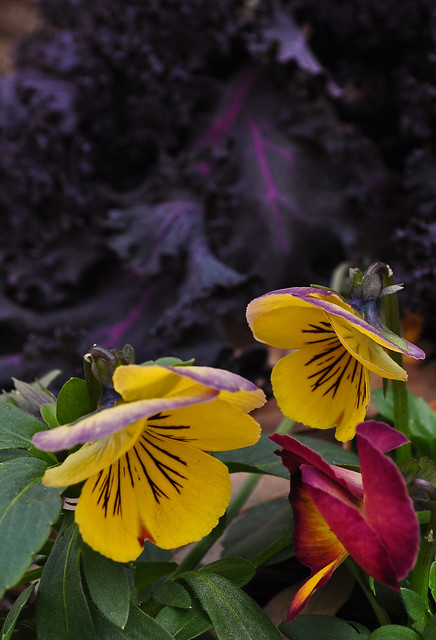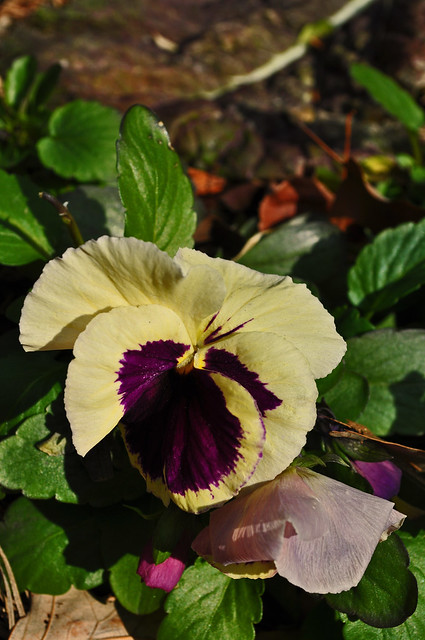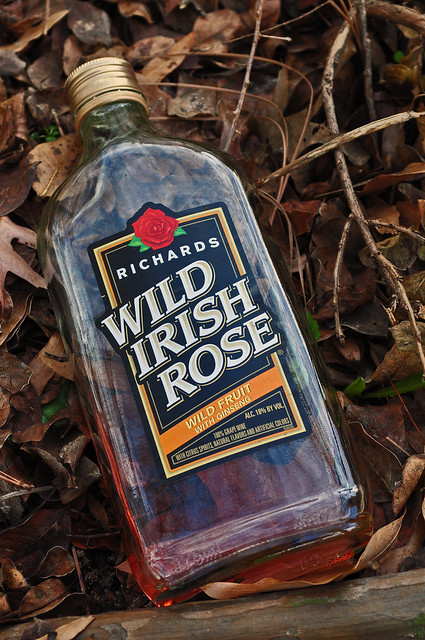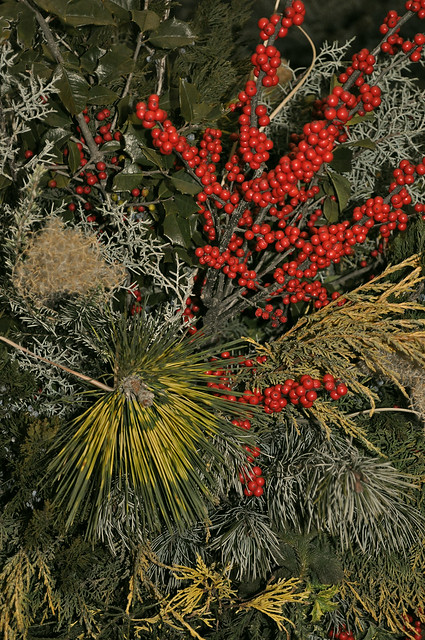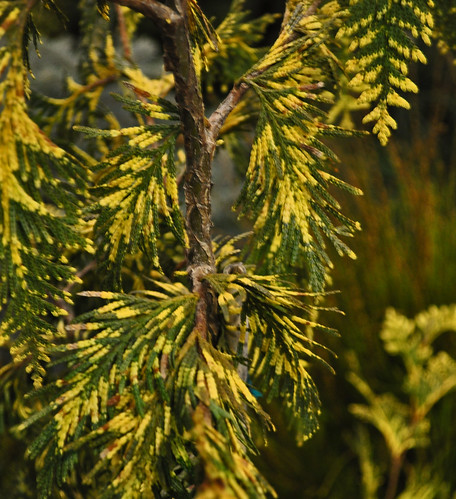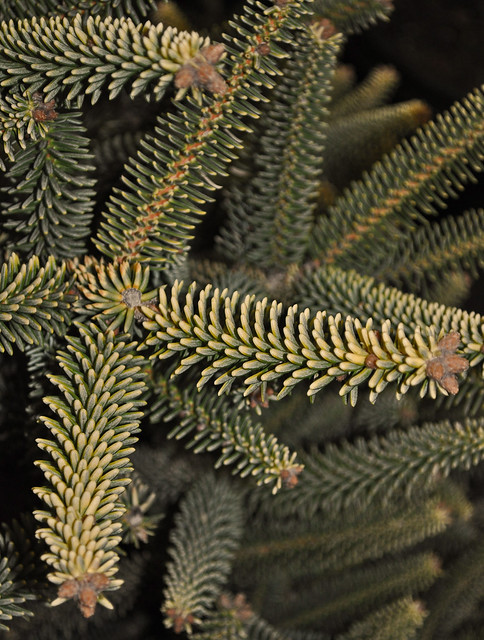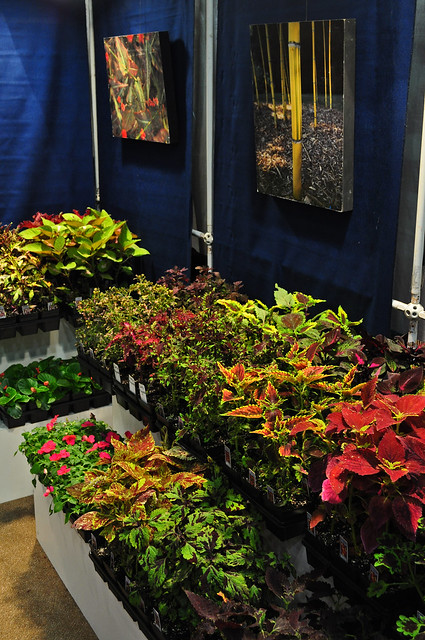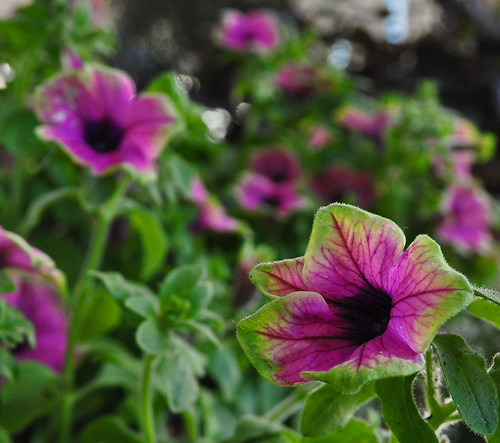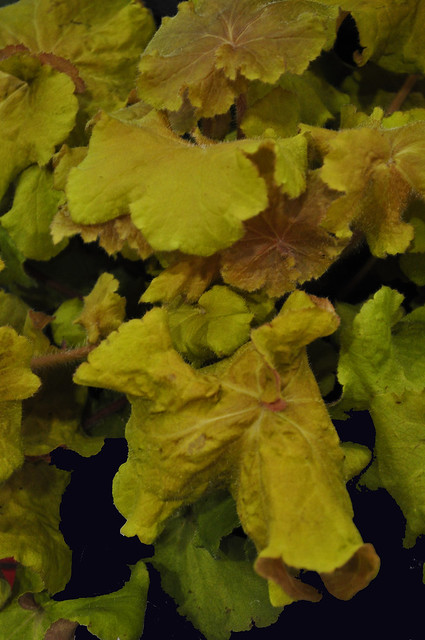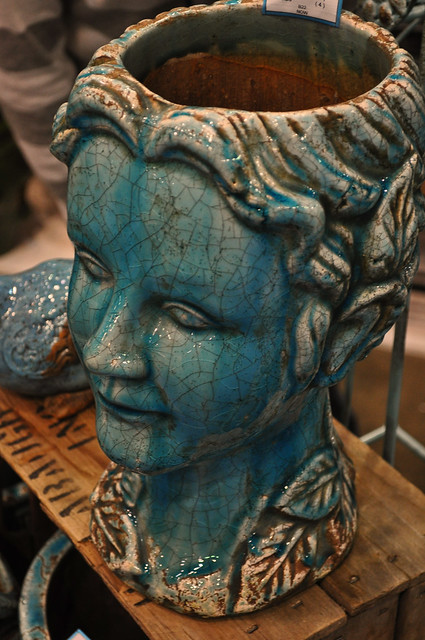As is traditional for me at this time of year, I spent the past week at the Mid Atlantic Horticulture Short Course, in Virginia Beach. Regular readers and local green people may know this is where arborists, designers, retailers, wholesale growers, turf people, landscapers, grounds people and others go to hone existing skills, learn new ones, hear about new plants and in general learn the things that keep us professional. At the end of the week, the doors are opened to the general gardening public and some of the same speakers put on a day long, themed program that always sells out. This year was a little different for me in that I am now on the board of the group (The Virginia Horticulture Foundation) that sponsors the conference, so I ended up having to work a little more. However, I was still able to attend the following classes, all of which were time well-spent.
- What's New in the World of Irises
Kelly D. Norris, Rainbow Iris Farm
It may have been January outside, but inside the darkened room it was May and the wall sized screen was showing some new versions of one of my favorite perennials. Fortunately the lights were up enough for me to write down the ones I want.
- Crazy About Coral Bells
Dan Heims, Terra Nova Nurseries
If you have fallen in love with all of the new Heuchera hybrids that have been hitting the market lately, well you can thank Dan Heims for about 99% of them. And we Southerners owe him a particular debt for injecting many with Heuchera villosa genes giving them the ability to withstand high heat and humidity.
- Great Trees in Great Landscapes
Robert McDuffie, Virginia Tech
Professor McDuffie leads horticultural tour groups all over the world in search of great gardens, and I was fortunate enough to go on a one of his trips to England and Wales back in 2000. You can see some of the places he visits and his excellent photography here.
- Wondrous Water Plants
Tamara Kilbane, Sarah P. Duke Gardens
Another good class, and one in which I learned, among other things, that the effort to breed hardy water lilies with tropicals to expand the color and climate range is paying off.
- Green Cities
Susan French, Virginia Cooperative Extension
Ms. French introduced us to how municipal landscaping and land management can make our cities greener, more pleasant and more sustainable. The city of Virginia Beach was used as an example and I was pleasantly surprised by what has been accomplished.
- Keeping a Pleasure Garden Pleasurable
Dan Benarcik, Chanticleer
If you have ever had the opportunity to visit the gardens at Chanticleer in Philadelphia, then I do not need to tell you how very special this place is. If you haven't been, then make plans to do so. It is one of the most fantastic gardens in the country.
- Garden Archaeology: Designs from the Past
Michelle Palmer, Cornell University & The Society for Garden Archaeology
Ms. Palmer showed us how the skills of traditional, and not so traditional archaeology are changing what we learn about historic gardens. She highlighted in particular her work at a villa near Mr. Vesuvius. This was class was fascinating.
- Deciphering the World of Hydrangeas
Vincent Simeone, The Planting Fields Arboretum Historic State Park
I am always willing to learn more about one of my favorite shrubs, and I was pleased to see that the majority of Hydrangeas he spoke of were ones I carry at work.
- Behind the Curtain
Nicholas Staddom, Monrovia Nurseries
Mr. Staddon is the Director of New Plants for Monrovia, and he showed us how the people of his company come up with all the new plants they are famous for introducing or promoting. There was no mention of their recent financial troubles, just plants and people, as it should be.
This was just a very small taste of what was available this year. If you would like to see my previous dispatches they are here.
Before I leave this link-heavy post and head back to the battlefield, I feel a need to invoke my usual disclaimer in that I have not been compensated in any way for mentioning any organization, corporation or concern. However I would not refuse a no-strings-attached Iris 'Zooboomafoo', Hosta x 'Empress Wu' or a lovely Melianthus major 'Antonow's Blue'.
January 28, 2011
January 20, 2011
Assateague Island in August
Let's leave this interminable cold we have been suffering, for the warm late summer air of Assateague Island. This has always been a special place for me and my family, and we would venture there often. In the summer the beach and swimming are the big draw, even with its chilly waters. We would also go in the winter to marvel at masses of snow geese, swans, brants and other waterfowl. Other than its mosquitoes, Assateague's most famous animals are its wild ponies which are usually very easy to spot, but they must have been camera shy that day, or perhaps it was way too early for them. I biked from Chincoteague Island over to Assateague and took advantage of some of the paved trails, and except for the birds and a few other early risers, I had the island to myself.
Conoclinium coelestinum (Hardy Ageratum)
Assateague Lighthouse
Kosteletzkya virginica (Virginia Saltmarsh Mallow)
The southern half of Assateague is in Virginia and the rest is in Maryland. Fortunately the entire island is protected either federally or by the states and barring major sea level rise, should remain a special place for many years to come.
Conoclinium coelestinum (Hardy Ageratum)
Assateague Lighthouse
Kosteletzkya virginica (Virginia Saltmarsh Mallow)
The southern half of Assateague is in Virginia and the rest is in Maryland. Fortunately the entire island is protected either federally or by the states and barring major sea level rise, should remain a special place for many years to come.
January 15, 2011
Bloom Day - Dodging Snowballs
No matter where you garden, I guess the big topic for this month's Bloom Day will be the weather. Despite our prolonged (much too prolonged) cold, I guess we are lucky in that we somehow dodged the snowball that came out of the South earlier this week and blanketed everybody else on the East Coast. We were not so lucky earlier, and several of the white projectiles have hit the mark. Since early December, the number of nights it has not dropped below freezing can be counted on one gloved hand. So I thought for sure all I would have to offer you for bloom day would be the dried out bouquet from my wife's birthday, a tired old Poinsettia or my bloomed-out Christmas Cactus.
Earlier this week I was determined that I would work in the garden on my day off, no matter how cold it was or what was falling from the sky. I have been putting off pulling expired summer annuals, cutting back the banana clump, raking the fallen leaves from my neighbor's tree and clearing the porch pots of dead plants. Things were looking rather trashy, and all the bent over shrubs from the Christmas snow needed staking and or cutting back. Among all this work I was pleasantly surprised to see some blooms, not many, but at least there are a few.
The Yuletide Camellia (Camellia sasanqua 'Yuletide') must be using the Julian calendar and is celebrating Christmas in January.
The Mahonia (Mahonia x 'Winter Sun') flowers have been preserved by the cold air, and are still holding lots of color.
Though flattened by several snows, the Pansies still bloom. The first two are Radiance Red and the next two are Delta Tapestry.
In my side garden near the street, I was surprised to see this volunteer Rose coming up. I'm not positive, but I think it is Rosa hiberniana, and have read that some people value its medicinal properties.
If you would like to see what January looks like in other gardens, then please visit Carol at May Dreams Garden. She is the hostess for Garden Bloggers Bloom Day held on the 15th of each month, and she does a fine job.
Earlier this week I was determined that I would work in the garden on my day off, no matter how cold it was or what was falling from the sky. I have been putting off pulling expired summer annuals, cutting back the banana clump, raking the fallen leaves from my neighbor's tree and clearing the porch pots of dead plants. Things were looking rather trashy, and all the bent over shrubs from the Christmas snow needed staking and or cutting back. Among all this work I was pleasantly surprised to see some blooms, not many, but at least there are a few.
The Yuletide Camellia (Camellia sasanqua 'Yuletide') must be using the Julian calendar and is celebrating Christmas in January.
The Mahonia (Mahonia x 'Winter Sun') flowers have been preserved by the cold air, and are still holding lots of color.
Though flattened by several snows, the Pansies still bloom. The first two are Radiance Red and the next two are Delta Tapestry.
In my side garden near the street, I was surprised to see this volunteer Rose coming up. I'm not positive, but I think it is Rosa hiberniana, and have read that some people value its medicinal properties.
If you would like to see what January looks like in other gardens, then please visit Carol at May Dreams Garden. She is the hostess for Garden Bloggers Bloom Day held on the 15th of each month, and she does a fine job.
January 9, 2011
MANTS
Last week was a rough one here at A Tidewater Gardener, so distractions as well as a bit of normalcy were called for. So I and two fellow retailers headed to MANTS (Mid Atlantic Nursery Trade Show) in Baltimore. On the floor of the vast convention center were close to 1000 exhibitors proffering their wares to garden centers and landscapers for the upcoming gardening season. Like I mentioned in last year's post, this is a plant-centric event, and I am always amazed at what's available to be seen on a bleak January day.
Foxborough Farms of Maryland always has one of the best displays, where they show off their plant material in huge arrangements.
I fell into plant lust with a few things, including Thuja plicata 'Zebrina Extra Gold'...
... these Vriesea Hybrid Bromeliads ...
... and especially this Abies pinsapo 'Aurea' (Golden Spanish Fir). I am encouraged that it is only hardy to zone 7 and grows in Spain and Morocco, hoping these facts may translate into southern heat tolerance.
This collection of Coleus had me lusting for summer.
Proven Winners had a major presence, and their plants were seen in several booths.
Truly black Petunias seem to be the new it color, but we are still debating whether we like last year's darling, Pretty Much Picasso.
Like I mentioned in last year's post, MANTS is a fairly good place to take the pulse of the horticulture business (and yes, it is a business). This year there were several faces missing from the convention floor, never to return. Also missing are the deep discounts and give-away prices of last year, as surviving nurseries have shed excess inventory. Several plant trends I saw last year seem to be continuing such as the proliferation of Heucheras, as well as the use of exotic succulents and tropicals as annuals and as container plants. There were several companies introducing new Hydrangea paniculata cultivars, and the U.S. National Arboretum was tauting two new dwarf H. quercifolia. It also looks as if the interest in home vegetable and fruit gardening may be slowing, just as bit, as well as the frantic breeding of new Hellebore varieties.
Foxborough Farms of Maryland always has one of the best displays, where they show off their plant material in huge arrangements.
I fell into plant lust with a few things, including Thuja plicata 'Zebrina Extra Gold'...
... these Vriesea Hybrid Bromeliads ...
... and especially this Abies pinsapo 'Aurea' (Golden Spanish Fir). I am encouraged that it is only hardy to zone 7 and grows in Spain and Morocco, hoping these facts may translate into southern heat tolerance.
This collection of Coleus had me lusting for summer.
Proven Winners had a major presence, and their plants were seen in several booths.
Truly black Petunias seem to be the new it color, but we are still debating whether we like last year's darling, Pretty Much Picasso.
Like I mentioned in last year's post, MANTS is a fairly good place to take the pulse of the horticulture business (and yes, it is a business). This year there were several faces missing from the convention floor, never to return. Also missing are the deep discounts and give-away prices of last year, as surviving nurseries have shed excess inventory. Several plant trends I saw last year seem to be continuing such as the proliferation of Heucheras, as well as the use of exotic succulents and tropicals as annuals and as container plants. There were several companies introducing new Hydrangea paniculata cultivars, and the U.S. National Arboretum was tauting two new dwarf H. quercifolia. It also looks as if the interest in home vegetable and fruit gardening may be slowing, just as bit, as well as the frantic breeding of new Hellebore varieties.
Subscribe to:
Posts (Atom)

